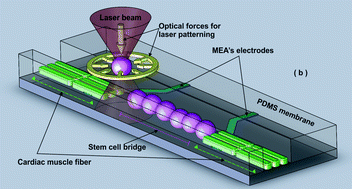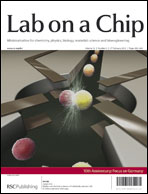Laser-patterned stem-cell bridges in a cardiac muscle model for on-chip electrical conductivity analyses
Abstract
Following myocardial infarction there is an irreversible loss of cardiomyocytes that results in the alteration of electrical propagation in the heart. Restoration of functional electrical properties of the damaged heart muscle is essential to recover from the infarction. While there are a few reports that demonstrate that fibroblasts can form junctions that transmit electrical signals, a potential alternative using the injection of stem cells has emerged as a promising cellular therapy; however, stem-cell electrical conductivity within the cardiac muscle fiber is unknown. In this study, an in vitro cardiac muscle model was established on an MEA-based biochip with multiple cardiomyocytes that mimic cardiac tissue structure. Using a laser beam, stem cells were inserted adjacent to each muscle fiber (cell bridge model) and allowed to form cell-cell contact as determined by the formation of gap junctions. The electrical conductivity of stem cells was assessed and compared with the electrical conductivities of cardiomyocytes and fibroblasts. Results showed that stem cell-myocyte contacts exhibited higher and more stable conduction velocities than myocyte-fibroblast contacts, which indicated that stem cells have higher electrical compatibility with native cardiac muscle fibers than cardiac fibroblasts.


 Please wait while we load your content...
Please wait while we load your content...